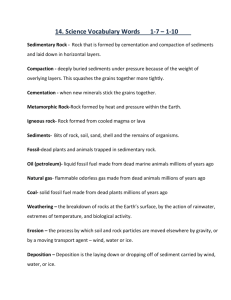

Beyond what has already been shared in your application, what do you believe makes you a strong candidate for admission to the University of California?.What have you done to make your school or your community a better place?.Describe how you’ve furthered this interest inside and/or outside the classroom. Think about an academic subject that inspires you.How has this challenge affected your academic achievement? Describe the most significant challenge you’ve faced and the steps you’ve taken to overcome this challenge.Describe how you’ve taken advantage of a significant educational opportunity or worked to overcome an educational barrier you’ve faced.What would you say is your greatest talent or skill? How have you developed and demonstrated that talent over time?.Describe how you express your creative side. Every person has a creative side, and it can be expressed in many ways: problem solving, original and innovative thinking, and artistically, to name a few.Describe an example of a leadership experience in which you’ve positively influenced others, helped resolve disputes, or contributed to group efforts over time.Take a ten question quiz about this page.The UC Personal Insight Question (PIQ) prompts Layers of sedimentary rocks are called strata.

Marble is a metamorphic rock formed when limestone is exposed to high heat and pressure within the Earth.Sedimentary rocks form layers at the bottoms of oceans and lakes.Ores are rocks that include minerals that have important elements such as metals like gold and silver.The word "igneous" comes from the Latin word "ignis" which means "of fire.".Typically they are made up mostly of iron. They may have different elements or mineral make up than a typical earth rock. There are actually some rocks that come from space called meteorites. They may change from one type to another and back again in practically any order. One thing to note is that rocks don't need to follow this specific cycle. When the pressure and heat get high enough, the sedimentary rock will metamorphose into a metamorphic rock and the cycle will start over again. Slowly this sediment rock will get covered with other rocks and end up deep in the Earth's crust.ĥ. As sediment builds up and hardens over years, a sedimentary rock is formed.Ĥ. Next the weather, or a river, and other events will slowly break up this rock into small pieces of sediment.ģ. Melted rock or magma is sent to the earth's surface by a volcano. Here is an example of the rock cycle describing how a rock can change from igneous to sedimentary to metamorphic over time.ġ. It takes millions of years for rocks to change. Rocks are constantly changing in what is called the rock cycle. Some examples of sedimentary rocks are shale, limestone, and sandstone. These pieces will settle at the bottom and over a really long time (perhaps millions of years), they will form into solid rock. Generally, something like a stream or river will carry lots of small pieces of rocks and minerals to a larger body of water. Sedimentary Rocks - Sedimentary rocks are formed by years and years of sediment compacting together and becoming hard.Examples of igneous rocks include basalt and granite. This hardened magma or lava is called igneous rock. Eventually the magma will cool down and harden, either when it reaches the Earth's surface or somewhere within the crust. When a volcano erupts, it spews out hot molten rock called magma or lava. Igneous Rocks - Igneous rocks are formed by volcanoes.Other examples of metamorphic rocks include marble, anthracite, soapstone, and schist. For example, shale, a sedimentary rock, can be changed, or metamorphosed, into a metamorphic rock such as slate or gneiss. Metamorphic rocks are often made from other types of rock.

They are generally found inside the Earth's crust where there is enough heat and pressure to form the rocks. Metamorphic Rocks - Metamorphic rocks are formed by great heat and pressure.There are three major types of rocks: Metamorphic, Igneous, and Sedimentary.

Scientists generally classify rocks by how they were made or formed. Rocks are generally not uniform or made up of exact structures that can be described by scientific formulas. A rock is a solid made up of a bunch of different minerals.


 0 kommentar(er)
0 kommentar(er)
